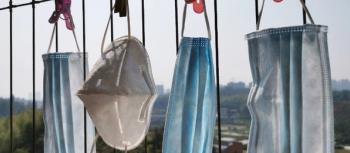
COVID-19: IPs, Other Healthcare Workers at Greater Jeopardy Than Thought
Already, two emergency room doctors in the United States are in critical condition with COVID-19.
Just a few days ago, an important study was released by Japanese researchers regarding COVID-19 testing on the passengers of the Diamond Princess cruise ship. There were 634 positive tests from 3711 passengers1. Of extreme concern, 17.9% of these passengers were asymptomatic and presumably could spread the virus. The risks of asymptomatic carriage was heightened by Dutch researchers who estimated that “The proportion of pre-symptomatic transmission was 48% (95%CI 32-67%) for Singapore and 62% (95%CI 50-76%) for Tianjin, China2.” This should create concerns regarding protocols which enable exposed healthcare workers to continue to see patients and the reuse of PPE.
Under current guidance facilities can still keep SARS-CoV-2 (the virus which causes COVID-19) exposed healthcare workers on the job with the stipulation of doing a daily screening for symptoms. The problem is this new research raises significant questions regarding the accuracy of the screening. This problem could be mitigated if there was a rapid test available. But the current test can take days to obtain a result and the healthcare workers could possibly be shedding the virus while performing patient care duties. A rapid test, similar to the flu test, would allow for a checking of the presence of the virus just before work activities commenced.
Finally, all of this is dependent upon the availability of adequate personal protective equipment (PPE). The strategy of reusing N-95 masks is also less secure since a patient may be shedding the virus and contaminate the equipment without the provider being aware of the increased risk. Again, knowing within a short period of time if a patient is positive for SARS-CoV-2 would increase the safety of this strategy.
In addition to faster and more available testing, there needs to be an increased effort by the federal government to provide adequate PPE. If adequate PPE is not available, it will place both healthcare workers and patients at risk. Already, two emergency room doctors in the United States are in critical condition with COVID-19.
References:
1) Kenji Mizumoto, Katsushi Kagaya, Alexander Zarebski, Gerardo Chowell. Estimating the asymptomatic proportion of coronavirus disease 2019 (COVID-19) cases on board the Diamond Princess cruise ship, Yokohama, Japan, 2020. Eurosurveillanc. March 12, 2020.
https://www.eurosurveillance.org/content/10.2807/1560-7917.ES.2020.25.10.2000180
(2) Tapiwa Ganyani, Cecile Kremer, Dongxuan Chen, Andrea Torneri, Christel Faes, Jacco Wallinga, Niel Hens Estimating the generation interval for COVID-19 based on symptom onset data doi:https://doi.org/10.1101/2020.03.05.20031815
Newsletter
Stay prepared and protected with Infection Control Today's newsletter, delivering essential updates, best practices, and expert insights for infection preventionists.





